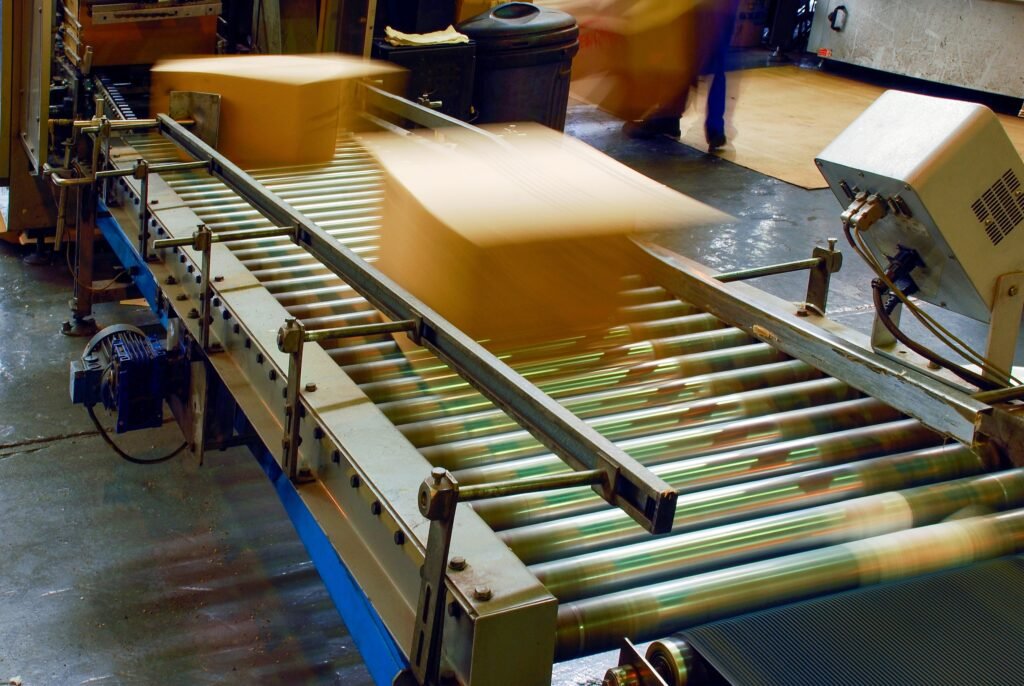Production and manufacturing can be broken down into various critical phases. One such important phase that is critical for positive product reception is packaging. You can design the most functional product, but it won’t matter if it isn’t packaged well.
While packaging can be time-consuming, larger production setups utilize packaging machines to standardize and streamline the packaging process. In this guide, we will take a closer look at packaging machines and how you can use them to level up your production line.

Product Presentation Using Packaging Machines
The packaging process can be fairly straightforward, depending on the product. It goes through several key stages, but the ultimate goal is to make your product presentable and capable of withstanding the shipping process.
It is not uncommon to pay close attention to packaging, with an emphasis on safety, which often requires time. With packaging machines, the process can be completed in less time. However, before you rush to order a packaging machine from the ATI GROUP, it would be helpful to understand how it works.
The order of operation will vary depending on the type of packaging machine, but we can use a simple pouch packaging machine as an example.
Package Loading and Refill
Do not start the packaging process without ensuring that the machine has enough packing material for the entire line. Using the pouch packager as an example, you’ll want to load in enough pouches for all the products you intend to pass through the machine. It wouldn’t hurt to have a little more than the planned amount to account for machine errors and any unforeseen incidents.
Printing and Placing Information Labels
Some packagers have labeling functionality, and you won’t need to create one manually. However, in the case of a pouch packaging machine, you might need to print and check each label. In such a case, there might be an added step to the assembly line where an operator manually places each label.
Loading Your Product Into the Package
This is the ultimate purpose of the packaging machine and the primary process. It will involve getting your product into each package as safely and precisely as possible. For a pouch packager, the loading process might be a sliding motion or a gravity loader. In either case, the pouch should be just large enough to accommodate your product.
Sealing the Package
If this is the final step when using the packing machine, then it will require a quality control specialist to monitor the process. In the case of a pouch packaging machine, vacuum sealing may be the solution, as it makes cutting off excess packaging easier.
The packaging process might have more stages, but this largely depends on your process and the type of packaging machine you use. In the next section, we will examine common types of packaging machines to help you better understand their differences.
4 Common Types of Packaging Machines You Should Know
You should be familiar with the concept of packaging machines at this point. While a rough order of operation has been explored above, there’s no way to generalize the process. The packaging machine assembly line is unique to each type, and in this section, we will take a look at some of those types.
Horizontal Form, Fill and Seal Packaging Machines
This machine relies on a single role of packaging material during the entire process. It is perfect for goods that need to be packed horizontally, and you will usually see this type of machine in candy factories, baked goods, and even soap bar production lines. This method allows you to maintain consistency across packaged goods, work at high speeds, and reduce material waste.
Flow Wrapping Machines
While similar to HFF sealing in using a single material through the packing process, flow wrapping is also heat-sealed. It involves continuously wrapping material around a product and then heat sealing the edges to lock in air. The result is a pillow-like final package that should provide some protection against stacking and the shipment process.
Shrink Wrapping Machines
Staying in line with the flow wrapper, shrink-wrapping machines encase the product in a material that is temperature-sensitive. This material will shrink when exposed to heat, producing a tightly packed final product. It can also be used as a primary packing solution and later supported by other packing methods, such as cardboard boxing.
Carton Packaging Machine
Think of the containers milk and some juices come in. Cartoners are responsible for loading liquids or semi-solids into containers and creating a watertight seal that can withstand jostling and other turbulence that may occur during shipping.
Conclusion
There is no one packaging machine to rule them all. Your choice greatly depends on your product. You should be able to make the right decision now that you understand how the packaging process works. The types explained above are just some of many. Do not hesitate to do further research so you can choose the right packaging machine for your operation.



